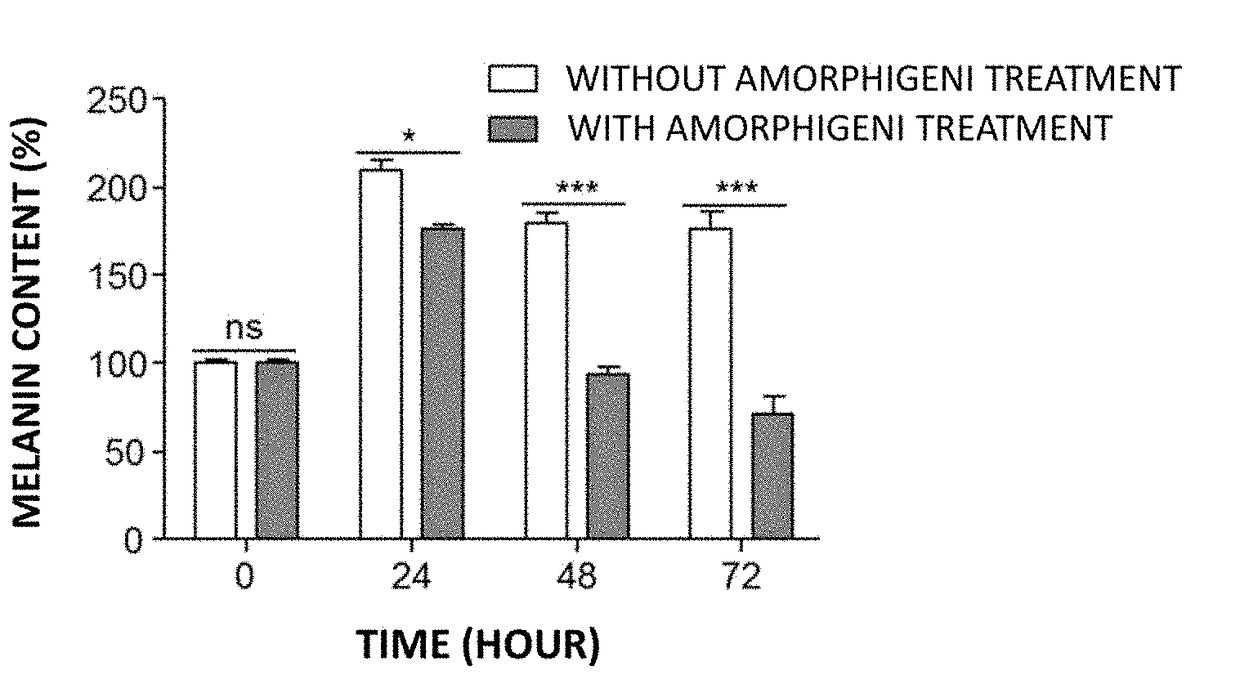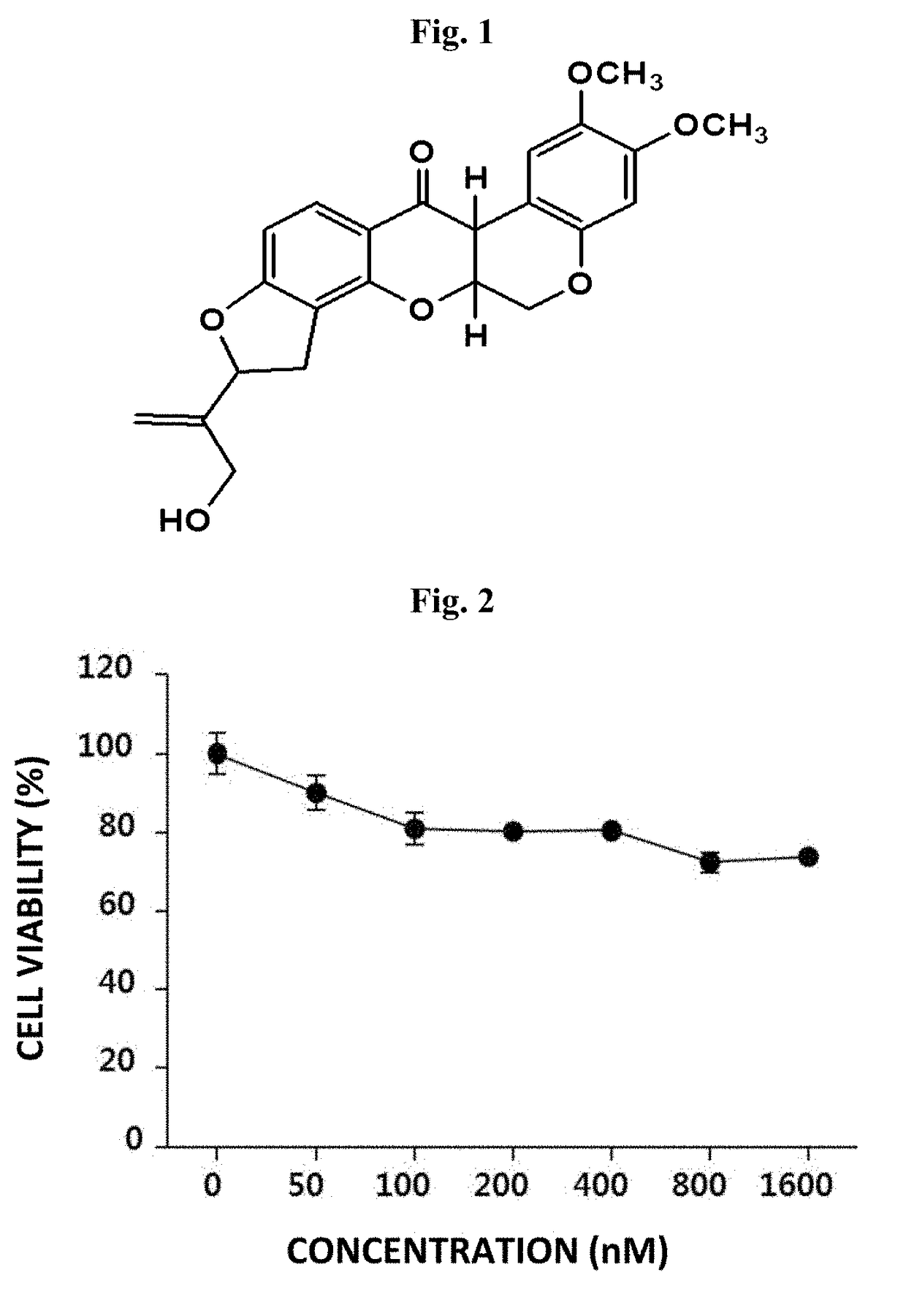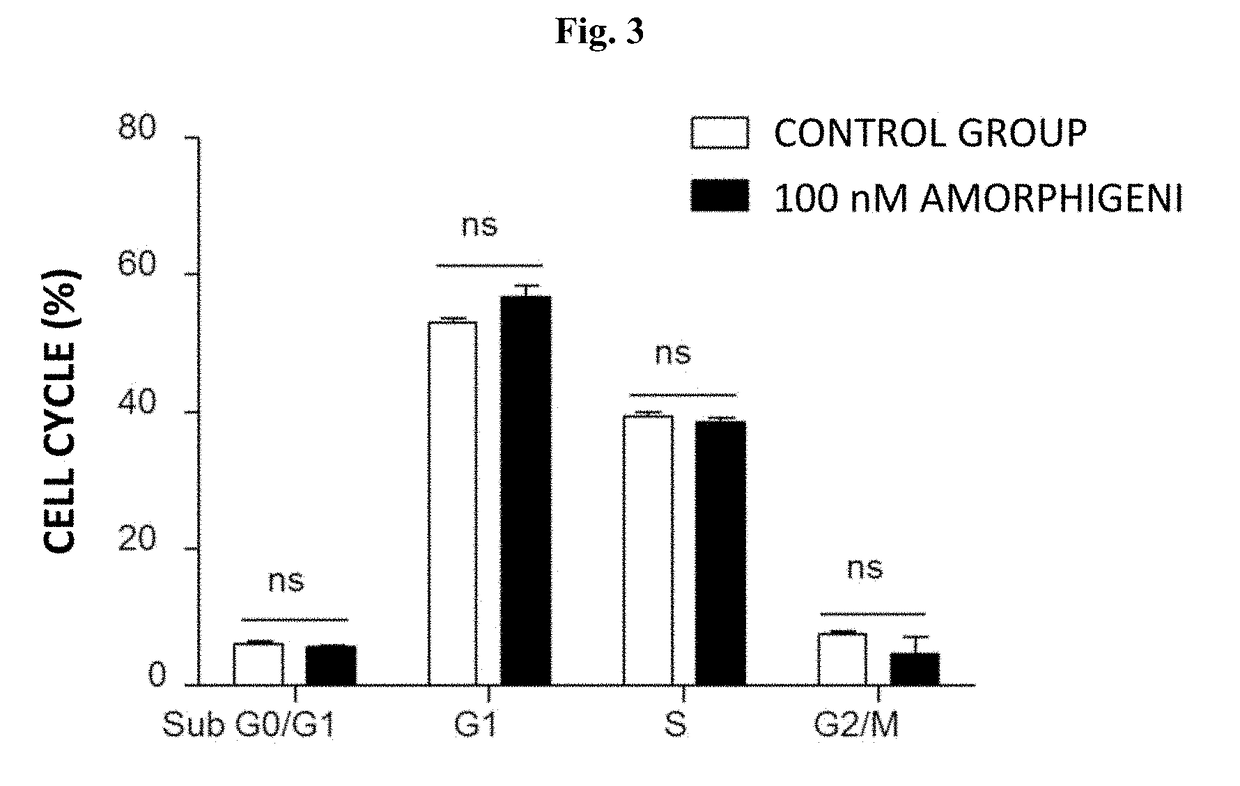Composition for skin whitening comprising amorphigeni as effective ingredient
a technology of amorphigeni and amorphigeni, which is applied in the direction of food ingredients, dermatological disorders, drug compositions, etc., can solve the problems of poor stability of the molecule itself, limitation in the actual use, and inability to meet the needs of ascorbic acid as a melanin production inhibitor, etc., to suppress the expression of tyrosinase, and induce autophagy on the melanin
- Summary
- Abstract
- Description
- Claims
- Application Information
AI Technical Summary
Benefits of technology
Problems solved by technology
Method used
Image
Examples
example 1
of Cell Viability According to Treatment with Amorphigeni of the Present Invention
[0060]In Example 1, to find out functional plant metabolites which induce depigmentation in melanin cells, amorphigeni was isolated from roots of Amorpha fruticosa (FIG. 1). To determine the cytotoxicity of amorphigeni, B16F10 cells were treated with amorphigeni at various concentrations followed by culture for 24 hours. Then, based on MTT (3-(4,5-dimethylthiazol-2-yl)-2,5-diphenyltetrazolium bromide) analysis, cell viability was determined. As a result, it was found as shown in FIG. 2 that, low cytotoxicity is exhibited by amorphigeni at 100 nM and 1600 nM but without inducing any cell death (FIG. 3).
example 2
Lowering Melanin Content According to Treatment with Amorphigeni of the Present Invention
[0061]In order to see whether or not amorphigeni can suppress the pigmentation induced by α-MSH (melanocyte-stimulating hormone), B16F10 cells were treated with α-MSH and amorphigeni, either separately or simultaneously, followed by incubation for 72 hours. As a result, as it is shown in FIG. 4, the melanin content and oxidation level of L-DOPA have significantly increased when the treatment is carried out only with α-MSH, while they tend to decease when the treatment is carried out with both of amorphigeni and α-MSH. Namely, it was able confirm that, by reducing melanin content, amorphigeni of the present invention can suppress depigmentation.
example 3
e-Nondependent Melanosome Removing Effect According to Treatment with Amorphigeni of the Present Invention
[0062]After treating B16F10 melanin cells with α-MSH alone or both of α-MSH and amorphigeni for 48 hours, protein expression level was measured by Western blot for each of tyrosinase (TYR) and PMEL (premelanosome protein). As a result, as it is shown in FIG. 5, the protein expression amount of tyrosinase and PMEL, which are induced by α-MSH, was effectively lowered by amorphigeni of the present invention.
[0063]In order to determine whether or not amorphigeni causes degradation of tyrosinase and PMEL protein by inducing a proteasome-dependent proteolytic process, B16F10 melanin cells were treated with α-MSH, amorphigeni, and MG132 as a proteasome inhibitor all together for 48 hours. After that, as a result of measuring the protein expression level of tyrosinase and PMEL based on Western blot, it was shown that the protein expression amount of tyrosinase and PMEL does not increase...
PUM
| Property | Measurement | Unit |
|---|---|---|
| fluorescent | aaaaa | aaaaa |
| pH | aaaaa | aaaaa |
| color | aaaaa | aaaaa |
Abstract
Description
Claims
Application Information
 Login to View More
Login to View More - R&D
- Intellectual Property
- Life Sciences
- Materials
- Tech Scout
- Unparalleled Data Quality
- Higher Quality Content
- 60% Fewer Hallucinations
Browse by: Latest US Patents, China's latest patents, Technical Efficacy Thesaurus, Application Domain, Technology Topic, Popular Technical Reports.
© 2025 PatSnap. All rights reserved.Legal|Privacy policy|Modern Slavery Act Transparency Statement|Sitemap|About US| Contact US: help@patsnap.com



